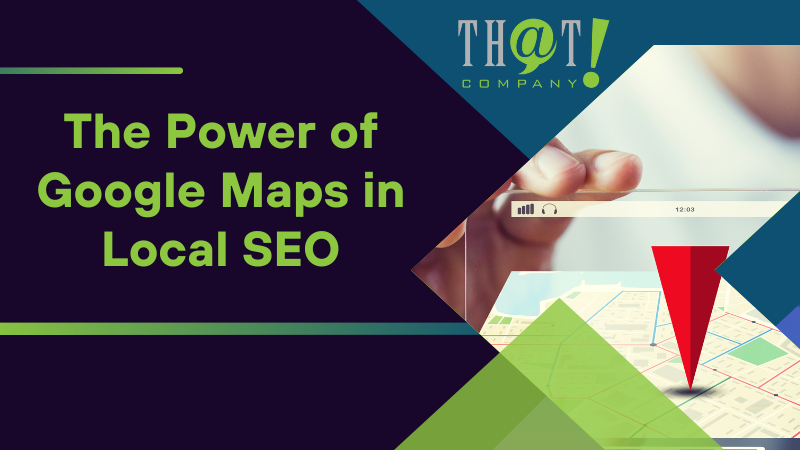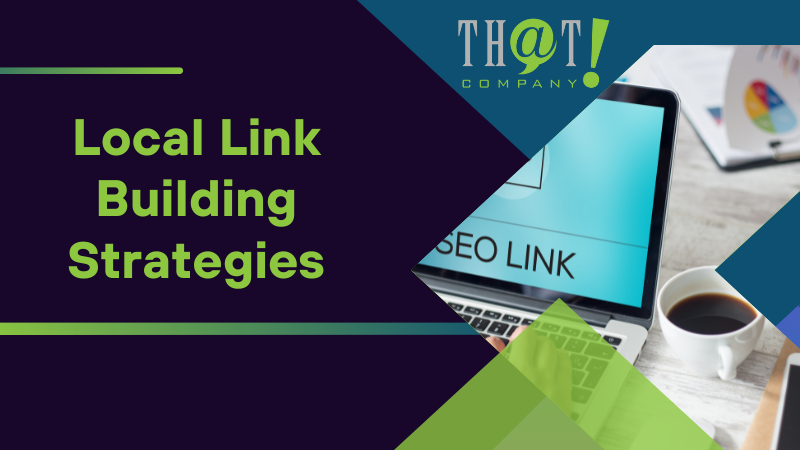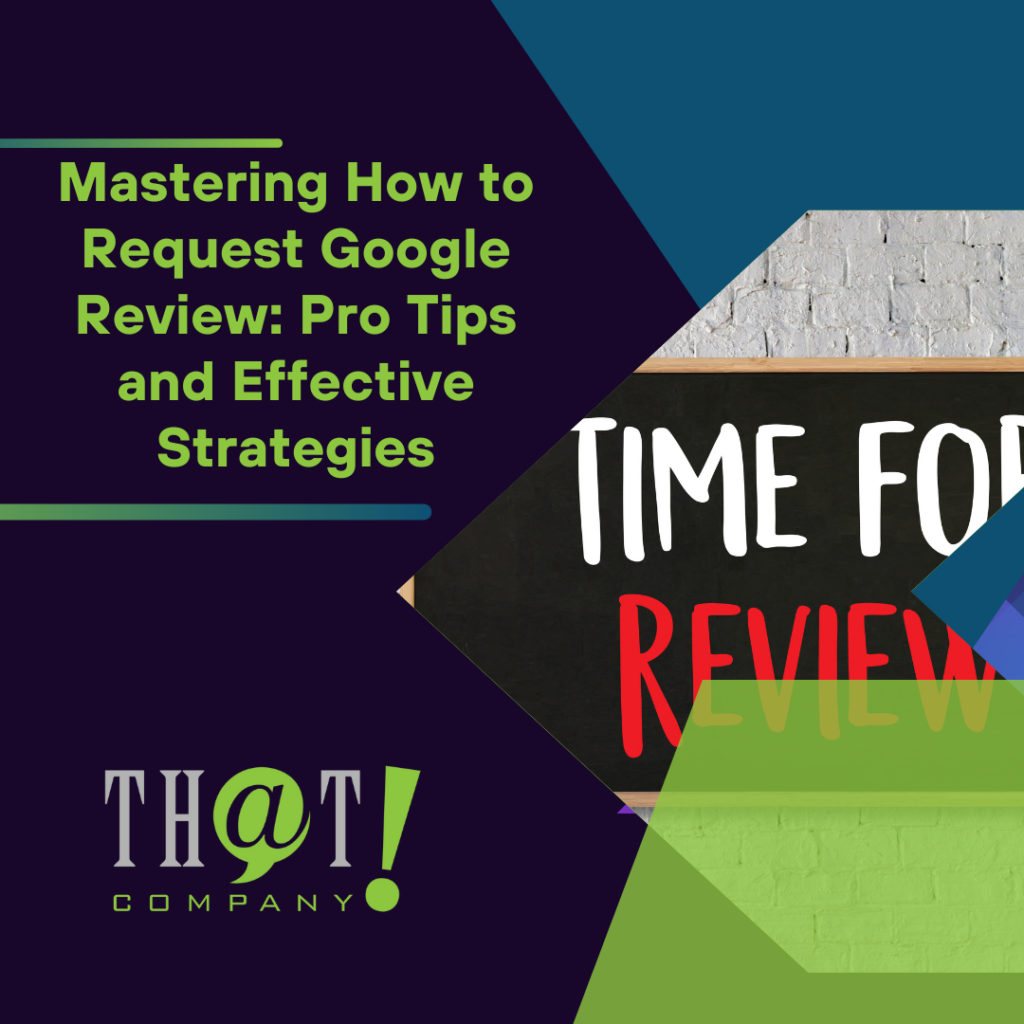
If you’re aiming for better local visibility, understanding the importance of a strong ‘local SEO map’ strategy is crucial. This article offers actionable steps to optimize your Google Maps presence and effectively boost your local search rankings. With these strategies, you can position your business as the top choice for customers searching for services in your area. There is no fluff, just the essentials you need to utilize local SEO features to your advantage effectively.
Key Takeaways
- Google Maps integration and accurate business information on Google Business Profile are essential for capturing local search traffic and improving local SEO.
- Local citations and consistent NAP (Name, Address, Phone number) across the web are vital for boosting local search rankings, and any inaccuracies must be addressed to maintain search visibility.
- Engaging with local communities through events, sponsorships, and collaborations strengthens backlinks and enhances your local SEO strategy effectively. Collecting and responding to online reviews significantly impacts search rankings while building credibility and trust with potential customers. Together, these efforts create a robust local presence, fostering connections and improving visibility in local search results.

The Power of Google Maps in Local SEO
Imagine your business appearing on the first page of local search results, attracting potential customers actively seeking your services. Google Maps plays a crucial role in this process, seamlessly integrated into local SEO strategies. Its ability to connect users with nearby businesses makes it much more than just a navigation tool. As a key player in the Google Map Pack, Google Maps is vital for local discovery, boosting traffic, and visibility.
Have you noticed how often you gravitate towards businesses that appear in the coveted ‘Local pack’ or ‘organic’ local results? This is where you want your business to shine, and Google Maps holds the key to unlocking this visibility. The statistics are staggering: 98% of consumers used the Internet to find local businesses last year alone. With mobile searches for ‘Where to buy’ and ‘Near me’ increasing by over 200%, local SEO must prioritize Google Maps. Prioritizing local SEO map presence is essential to capture this growing audience and stay competitive in the evolving local search landscape.
Enhancing your Google Maps presence boosts visibility, ensuring your business becomes the top choice for local search users. This strategic focus helps attract users who are ready to engage and convert, driving more foot traffic and online inquiries. By optimizing your Google Maps listing, you’re positioning your business to capture valuable local search opportunities and boost conversions.
Importance of Accurate Business Information
Imagine a customer’s frustration when they arrive at a business, only to find it closed despite the listed hours. This highlights the absolute necessity for accurate business information on your Google Maps listing. It’s like keeping your storefront tidy and welcoming—ensuring your business name, address, phone number, and description are accurate. Regularly updating this information and syncing it with your Google Business Profile creates a seamless path for customers to visit. This boosts foot traffic and increases the potential for sales, making it easier for customers to find and engage with your business.
But there’s more to accurate listings than just attracting new customers. Google Business Profile analytics provide valuable insights, including peak visit times, customer inquiries, and website visits, helping optimize strategies. This data is gold, as it helps you refine your customer experience and tailor your offerings to meet demand. When it comes to a local SEO map, if you keep your business info on Google Maps up-to-date, and you’ll guide customers to your door while initiating conversations beforehand.
Leveraging Google Maps Features
Now, let’s take Google Maps beyond the basics. With features like Street View, you can offer customers a virtual tour of your surroundings, enticing them to visit. For businesses in complex buildings or large malls, indoor maps are essential, guiding visitors directly to your doorstep. These tools aren’t just enhancements—they improve user experience and, ultimately, boost your local search visibility and customer engagement.
But what about accessibility? Google Maps is a beacon for inclusivity, offering information on accessible features such as entrances, parking, and facilities. Incorporating real-time traffic updates empowers customers to plan visits efficiently, making it easier for them to reach you. When leveraged effectively, these features can distinguish your business in the local SEO map landscape, enhancing your Google Maps listing. By offering this level of convenience, your listing becomes indispensable, driving more foot traffic and improving customer satisfaction.

The Role of Google Business Profile in Local SEO
Your Google Business Profile is more than just a digital business card; it’s the cornerstone of your local SEO empire. This powerful tool manages your presence across Google Maps and Search, significantly impacting your local search rankings. It contributes 33% to local pack ranking factors, making it essential for any local SEO campaign. Beyond rankings, it’s a cost-effective strategy for local businesses to share updates, engage with the community, and build rapport.
When your Google Business Profile is brimming with accurate and complete information, you send a message of credibility and trustworthiness to potential customers. It’s about painting a picture of your business that resonates with your audience—making them feel as though they know you before they’ve even walked through your door. By optimizing your profile with relevant keywords and engaging with customers through Google reviews, you’re not just climbing the rankings; you’re also securing a spot in the coveted Google 3-pack, the holy grail of local search visibility.
Optimizing Your Google Business Profile
The devil is in the details, and when it comes to your Google Business Profile, every detail counts. Keeping your business information up-to-date is just the start. Are your hours of operation accurate? Is your contact information current? Are you posting regular updates about your business? These elements are critical for keeping your profile fresh and relevant, ensuring that local customers have all the information they need at their fingertips.
But optimization doesn’t stop at mere information updates. Tailoring your profile to your local audience with location-specific promotions and events can make all the difference. Consistency is also key. Your Google Business Profile must align with the information found on other online platforms, reinforcing your legitimacy and boosting your local SEO map optimization. It’s about creating a cohesive, accurate, and engaging narrative that captures the essence of your local business and entices customers to engage with you.
Monitoring and Analyzing Performance
In the realm of local SEO, information is power. With the analytics tools provided by your Google Business Profile, you can:
- Dive deep into customer behaviors and preferences
- Uncover insights that can fine-tune your marketing strategies
- Consider this your crystal ball, giving you a glimpse into how customers find and interact with your business
- Regularly audit your profile to ensure the accuracy of your information
- Optimize your local SEO performance for a stronger online presence.
But what if you want to go beyond the basics? Tools like Local Falcon are at your disposal, helping you monitor and manage your local search efforts more effectively. With trend and keyword reports, you’ll stay ahead of search trends, adapt to shifts in consumer behavior, and measure the impact of your local SEO optimizations. It’s about embracing the data, interpreting it wisely, and using it to carve out a dominant position in the local SEO map landscape.

Enhancing Local Visibility with Local Citations
The tapestry of local SEO is rich and varied, and local citations are its vibrant threads. These mentions of your business’s name, address, and phone number across the web are crucial for boosting your local search rankings and visibility. But it’s not about collecting citations like trading cards; the quality of these citations holds more weight than their quantity. From structured citations in business directories to unstructured citations on blogs and government sites, each one adds a layer of authority and relevance to your local SEO efforts. By leveraging professional local SEO services, businesses can ensure their citations are strategically placed to maximize their impact and drive significant improvements in local search performance.
Imagine your business name being echoed across reputable local directories and review sites, each citation amplifying your local search visibility. It’s like a chorus of digital voices, all singing your praises and pointing customers in your direction. By focusing on acquiring quality local citations, specifically tailored for each business location, you’re laying down a foundation that not only strengthens your online presence but also resonates with the local community.
Building and Managing Local Citations
Building a fortress of local citations begins with the cornerstone of consistency. Your NAP (name, address, and phone number) information must be uniform across all listings, affirming to Google the authenticity of your business and positively impacting your presence in local searches. Consider key platforms like Google, Google Maps, and Yelp as your initial stepping stones for establishing this consistency. But with the diversity of directories out there, choosing the right tool to manage your business listings is crucial. It allows for efficient upkeep of citation consistency and accuracy, tailored to your business’s size and needs.
Think of directories as fertile ground for building local SEO map backlinks, with NAP citations playing a pivotal role in the local search ranking algorithm. By nurturing these listings with regular updates and monitoring, you’re not just maintaining your citations; you’re cultivating a garden of opportunities that can blossom into higher search visibility and rankings.
Identifying and Fixing Citation Issues
In the vast expanse of the internet, your business information can sometimes stray off the path, leading to inconsistencies and inaccuracies. Regular reviews and audits of your business citations are vital to maintaining the accuracy that influences your local search rankings. This is where precision tools like WhiteSpark and Loganix come into play, offering businesses the means to run audits on their NAP information efficiently.
Correcting any discrepancies in your citations is not just housekeeping—it’s an essential part of mastering local SEO. By proactively identifying and fixing citation issues, you ensure that every digital signpost leading to your business is clear, coherent, and correct. It’s a continuous process, but one that pays dividends in boosting your credibility and local search visibility.

Local Link-Building Strategies
In the local SEO map landscape, link-building is akin to forging alliances. The strength of these alliances is measured not in numbers but in relevance, signaling to Google the local significance of your business. By establishing quality partnerships and engaging with the local community, you create a network of backlinks that bolster your local SEO efforts. Whether it’s through Chamber of Commerce backlinks, local news websites, or community forums, each link is a thread that ties your business to its local fabric, driving up your search visibility and rankings.
But remember, local link building is not a sprint; it’s a marathon. A strategic approach is required, one that values patience and precision. A handful of high-quality local links can do more for your search visibility than a multitude of mediocre ones. It’s about focusing on the connections that matter, the ones that enhance your local presence and resonate with the community you serve.
Collaborating with Local Businesses
Building bridges with other local businesses can yield inbound links that carry both relevance and authority, critical elements for boosting your local SEO map rankings. Take, for example, the goodwill generated through donating to local causes. This act of community participation can lead to press mentions and backlinks, showcasing your business’s commitment to the local area. Another method is to transform existing brand mentions into backlinks; a simple request to include a link on a mention can extend your digital footprint significantly.
But it’s not just about seeking links; it’s about nurturing relationships. Exchanging reviews, for instance, can be a foundation for securing those valuable backlinks, and strengthening ties within the local business community. It’s a give-and-take that benefits all parties involved, creating a symbiotic ecosystem where each link is a testament to your business’s integration and reputation in the local market.
Participating in Local Events and Sponsorships
When it comes to raising your local profile, few strategies are as effective as immersing yourself in local events and sponsorships. Not only does this enhance your brand visibility, but it can also lead to valuable backlinks from event websites. Sponsoring a local team or event can endear your business to the community, and the link on the event’s website is a bonus that can improve your local search rankings.
Partaking in local festivities and activities can:
- Open the door to backlinks through press coverage and event promotion
- Paint your business as an active and engaged member of the community
- Showcase your brand in a positive light
- Forge connections that can translate into a stronger online presence and deeper local roots.

Harnessing the Power of Reviews and Testimonials
In the digital age, word of mouth has transformed into online reviews and testimonials, becoming a pivotal aspect of local SEO. A torrent of positive reviews can significantly elevate a business’s search ranking, painting a picture of trust and credibility to both search engines and potential customers. This respect isn’t confined to just Google reviews; a spectrum of platforms hosting reviews sends robust signals that can supercharge your local SEO map performance. On the flip side, negative reviews can tarnish your reputation and erode your local SEO effectiveness, steering customers away and potentially damaging your hard-earned rankings.
Thus, the cultivation of a positive online review profile is not just beneficial; it’s essential. It’s akin to a beacon that guides the target audience, illuminating the path toward your business with each glowing recommendation. Building this beacon requires a strategy that not only encourages customers to share their experiences but also ensures that their voices are heard across the vast digital landscape.
Encouraging Positive Reviews
The quest for positive reviews begins with the cornerstone of exceptional customer service, creating experiences that customers can’t wait to share. Here are some strategies to encourage customer advocacy and boost the volume of customer feedback:
- Directly ask for reviews.
- Offer incentives aligned with platform guidelines.
- Show gratitude for feedback.
- Make the review process straightforward and accessible.
By implementing these strategies, businesses can increase the likelihood of receiving positive reviews and improve their online reputation.
Sending follow-up emails or providing various platforms for reviews are strategic moves that can lead to a wider range of customer feedback. And it’s not just about the positive reviews; engaging with all feedback demonstrates a brand that values its customers and is committed to continuous improvement. This level of engagement can transform even the simplest comment into a powerful testament to your brand’s dedication to its customers.
Responding to Negative Reviews
Negative reviews can be a thorn in the side of any business, but when handled with grace and professionalism, they can turn into opportunities for growth and improved customer relations. Here are some tips for responding to negative reviews:
- Personalize your response: Address the reviewer by name and acknowledge their specific concerns.
- Move the conversation offline: Provide contact information and invite the reviewer to reach out directly to discuss the issue further.
- Show commitment to customer satisfaction: Express your willingness to resolve the problem and take corrective action if necessary.
- Respond promptly: Aim to address the review within 24 hours to demonstrate a proactive approach and value customer input.
By following these tips, you can turn negative reviews into opportunities for growth and show your commitment to customer satisfaction.
These reviews should be seen as invaluable feedback that can steer a business toward better practices and solutions. Indeed, a well-crafted, tactful response can be just as influential as the review itself, reflecting your brand’s maturity and dedication to excellence. Embrace the critique, learn from it, and let your responses showcase a brand that’s not only listening but also evolving.

Local SEO Best Practices for Multi-Location Businesses
For the multi-location business, local SEO is a jigsaw puzzle where each piece represents a different geographic location. Each piece must fit perfectly to complete the picture of a robust local search presence. Maintaining accurate and up-to-date information for every location is a non-negotiable aspect of this puzzle. Unique content tailored to each location’s specific audience can help businesses rank for local keywords pertinent to those areas, drawing in customers who are searching with local intent. By focusing on local rankings, businesses can ensure they are reaching their target audience effectively.
Creating local landing pages is like opening a new doorway for each location, inviting in location-specific customers who are looking for exactly what you offer in their vicinity. This approach ensures that your business doesn’t just appear in local search results—it stands out. By adopting these best practices, multi-location businesses can assert a commanding presence in the local search landscape, making every location a beacon for potential customers.
Creating Location-Specific Content
To resonate with the local audience, a business must speak their language—literally. This means crafting location-specific content that addresses the unique needs and interests of each community. By developing separate web pages optimized with targeted local keywords, businesses can cater to the specific search location of their customers, enhancing their local SEO map strategy and utilizing local service ads effectively.
These location pages are more than just information hubs; they encapsulate the essence of each location, featuring opening hours, contact details, and local offerings that set each spot apart from the rest. The inclusion of geo-targeted keywords in URLs, title tags, and meta descriptions is the secret sauce that boosts search rankings, while the creation of individual location pages for businesses with multiple physical locations ensures that each one shines in its own right.
Furthermore, these pages are magnets for local backlinks, which not only enhance the site’s authority but also improve its standing in local search results.
Managing Multiple Google Business Profiles
Navigating the waters of multiple Google Business Profiles requires a captain’s expertise. Consolidating these profiles under a single account offers a panoramic view of your brand’s online presence, streamlining management and maintaining consistent branding. Claiming and verifying all existing listings is akin to planting your flag in the digital ground, ensuring you have full control over the information disseminated across the web.
For the fleet of multi-location businesses, tools like Location Groups and Google Business Profile’s bulk management tool are the compass and chart, guiding efficient profile updates and consistent messaging across all locations. By setting user permissions within a Location Group, businesses can delegate tasks while maintaining central control, ensuring that the ship sails smoothly and securely toward its destination of local SEO map dominance.

Advanced Local SEO Techniques
As the digital landscape evolves, so too must our local SEO strategies. Advanced techniques are the tools of the trade for those looking to stay a step ahead of the competition. Employing citation-building tools and indexing in local business directories can streamline the management of local citations, making the process as efficient as it is effective. Tapping into newsworthy events and telling compelling company stories can attract local media attention, earning backlinks that are as valuable as they are newsworthy. Partnering with a specialized local SEO agency like That! Company ensures that these strategies are expertly executed, enhancing visibility and driving local engagement for businesses.
To bolster local SEO efforts, businesses must also focus on off-page optimization and local SEO ranking factors. This involves utilizing advanced tools and software that hone in on the intricacies of local search demands. By implementing search engine optimization strategies, you can signal to Google the relevance of your website for local searches, ensuring that when customers look for businesses like yours, you’re not just in the race—you’re leading the pack.
Voice Search Optimization
As the way we search shifts towards a hands-free paradigm, voice search optimization becomes a critical element of a forward-thinking local SEO strategy. These searches often involve natural language and longer queries compared to the concise keyword searches we’re accustomed to. With a significant slice of mobile searches now voice-driven, targeting n-grams with local intent such as:
- “best pizza place near me”
- “restaurants open now”
- “closest gas station”
- “hair salons in my area”
can capture a segment of the audience that’s asking for businesses like yours.
Optimizing for voice search is like tuning a musical instrument to play a new kind of song—one that’s more conversational and personal. By adapting to the natural language used in voice searches, businesses can ensure they resonate with users who are increasingly turning to their virtual assistants for answers. It’s about being present in the moment a potential customer decides to speak up and ask for what they want.
Mobile-First Local SEO
In today’s fast-paced world, mobile devices are more than just communication tools—they’re lifelines to the digital world. A mobile-responsive Google Business Profile is essential, as an increasing number of Google searches happen on the go. It’s about meeting your customers where they are, ensuring that every interaction with your business online is as seamless and user-friendly as a face-to-face encounter.
Aiding in this mobile-first approach is the careful structuring of URLs that contain location-specific keywords. This not only aids search engines in understanding your website’s organization but also enhances the user experience for those browsing on mobile devices. By prioritizing mobile users, businesses can ensure that their local SEO efforts are not just effective but also tailored to the rhythms and flows of modern life.

Summary
Navigating local SEO reminds us of its power to connect businesses with their communities. Optimizing your Google Business Profile, leveraging Maps features, building citations, and fostering reviews are key to local search dominance. For businesses with multiple locations, creating location-specific content and managing individual profiles are essential practices that cannot be overlooked.
Let this be your guide, a map to the treasure trove of local search visibility. Embrace the strategies and techniques discussed, and set sail towards the horizon of online success. Remember, local SEO is a continuous journey requiring dedication, adaptability, and awareness of the evolving digital landscape. By partnering with a trusted white label digital marketing agency like That! Company, you can ensure that every step of the journey is expertly navigated. Stay true to these principles, and your business will shine as a beacon in the local SEO map landscape.

Frequently Asked Questions
How does Google Maps influence local SEO?
Google Maps significantly influences local SEO by boosting visibility and credibility for businesses in local search results, helping users find and engage with them effectively.
Why is it important to keep a Google Business Profile updated?
Keeping your Google Business Profile updated is crucial as it impacts local search rankings, boosts online visibility, and builds customer trust. These factors can ultimately lead to a higher position in search engine results.
What are local citations, and why do they matter?
Local citations, such as mentions of a business’s name, address, and phone number online, are crucial for improving local search rankings and visibility. It’s important to focus on quality citations over quantity.
How can local link building improve my business’s online presence?
What are some advanced local SEO techniques to consider?
Consider advanced local SEO techniques like optimizing for voice search, mobile responsiveness, citation-building tools, and off-page optimization to boost local search relevance. These techniques can help improve your local search rankings.

























